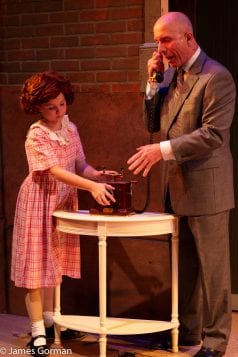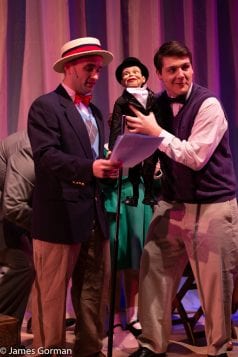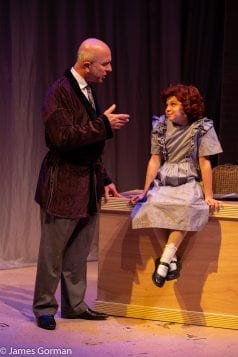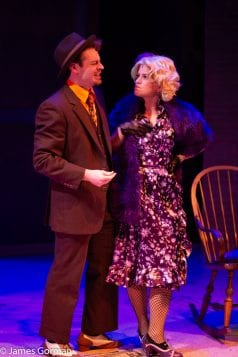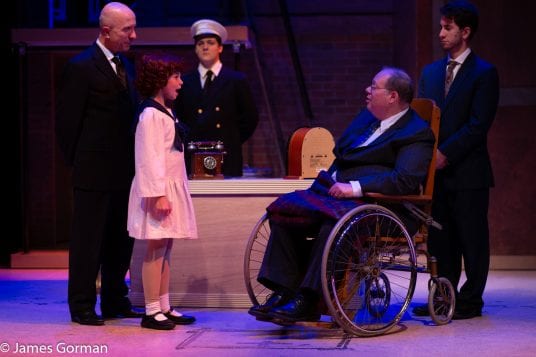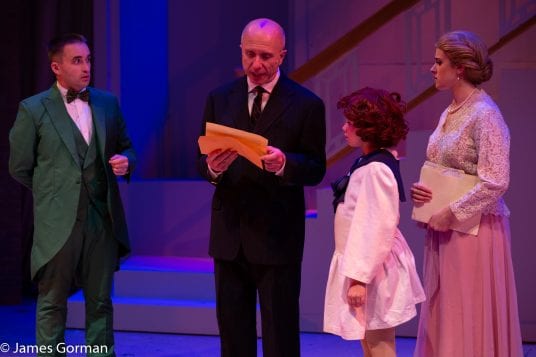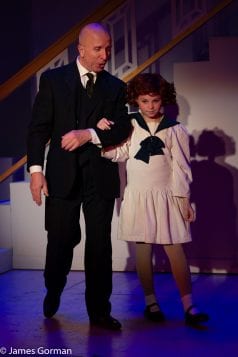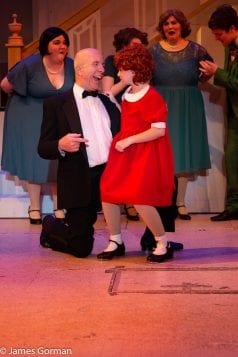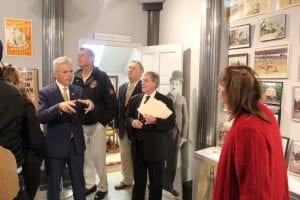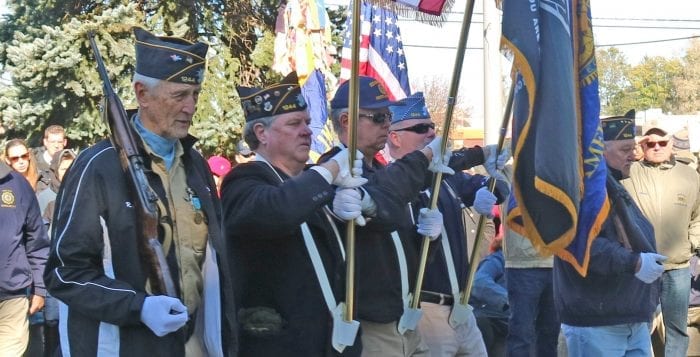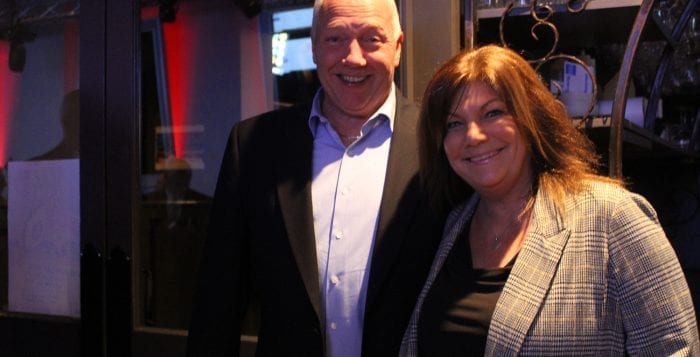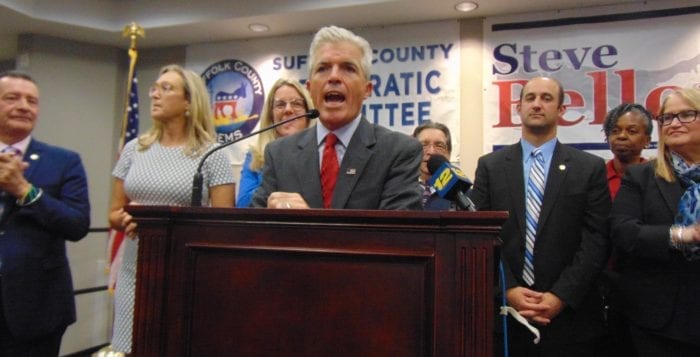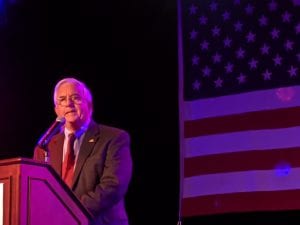By Heidi Sutton
Just in time for the holidays, the Smithtown Center for the Performing Arts kicks off its 18th season with a production of the classic family musical “Annie” through Jan. 20. Last seen on the Smithtown stage back in 2010, the show returns with fervor with a whole new cast, albeit a lovable favorite, and brims with hope, optimism and dreams.
With book by Thomas Meehan, music by Charles Strouse and lyrics by Martin Charnin, “Annie” the musical premiered on Broadway at the Alvin Theatre (now the Neil Simon Theatre) in 1977. Since then, the award-winning show has toured around the world and serving as inspiration for many stage, film and television adaptations.
Loosely based on the adventures of Little Orphan Annie, a comic strip created by Harold Gray in the 1920s, “Annie” tells the story of a spunky 11-year-old who has been living at the New York Municipal Orphanage for Girls since her parents dropped her off there when she was an infant with half a locket and a note promising to come back for her. As the years pass Annie grows restless waiting for their return and runs away a lot, testing the patience of the ill-tempered and downright cruel Miss Hannigan who runs the orphanage.
“That was 1922 and this is 1933 – they must’ve got stuck in traffic!” Miss Hannigan says sarcastically.
As the holidays roll around, billionaire Oliver Warbucks sends his personal secretary Grace Farrell to the orphanage to choose one lucky orphan to spend Christmas at his mansion. The secretary chooses the rambunctious curly-haired redhead, who quickly steals the hearts of Farrell, Warbucks and the entire household staff. When the billionaire hears Annie’s story, he offers a $50,000 reward to help find her parents, attracting every swindler out there including Miss Hannigan’s shady brother Rooster and his girlfriend Lily. Will their scheme be foiled? Will Annie find her real parents?
Directed by Tommy Ranieri, the uber-talented cast embraces the ever-optimistic script and runs with it. The role of the orphans are double cast, with a Red and Green Cast. Last Saturday afternoon’s performance, performed by the Green Cast, featured a wonderful Paige Mathers as Annie (a role shared with Gabby Blum), perfectly capturing her character’s pluckiness, toughness and determination. Mathers’ versions of “Maybe” and “Tomorrow” are delivered perfectly.
Annie’s fellow orphans, played by Cassidy Gill, Catalina A. Kreitzman, Adrienne Porti, Alexa Oliveto, Alexandra Mitnick and Jenna Hammelman, are terrific as well, most evident in the big number, “It’s a Hard-Knock Life.”
Joe Morris is perfectly cast as Oliver Warbucks and shines in “NYC” and “I Don’t Need Anything But You.” The bond he shares with Annie is charming and sweet.
While the ensemble serves as the supporting cast for the show, they have plenty of time to shine on their own — especially Jeremy Hudson who changes roles quicker than changing clothes. It was nice to see him back on SPAC’s stage.
Erica Giglio Pac steals the spotlight as the cantankerous and boozy Miss Hannigan. Her vocals on “Little Girls” are pitch perfect and her wishful thinking rendition of “Easy Street” with Ryan Cavanagh as Rooster Hannigan and Alyson Gannon as Lily St. Regis leaves the audience wanting more.
And there is a lot more, with a tap dancing Santa Claus, an appearance by President Franklin D. Roosevelt (Doug Vandewinckel) and, amazingly, Shamus, the sweet cocker spaniel who played Sandy in the theater’s 2010 production, reprises his role as Annie’s lovable sidekick.
Choreography by Ryan Cavanagh is excellent, especially in the big numbers like “NYC” and “It’s a Hard-Knock Life” which uses wet mops as props.
Designed by Tim Golebiewski, the set is most impressive as it rolls and turns on wheels. The orphanage, with its many bunk beds, is transformed into a back alley, the entryway of Oliver Warbuck’s mansion and the Oval Office of the White House. Long creme-colored silk curtains are draped to hide the different props and give the scenes an expensive and festive feel.
The full orchestra brings a wonderful richness to the classic songs, under the direction of Melissa Coyle, while the beautiful period costumes by Ronald Green III, complete with Annie’s iconic red dress, tie the whole production together in a big holiday bow.
The Smithtown Center for the Performing Arts, 2 E. Main St., Smithtown presents “Annie” through Jan. 20. Running time is approximately 2½ hours with one intermission. Tickets are $40 adults, $36 seniors, $25 students. For more information or to order, call 631-724-3700 or visit www.smithtownpac.org.
All photos by James Gorman







